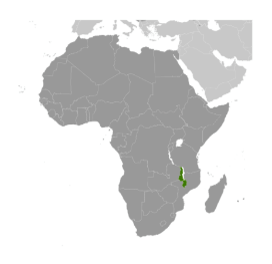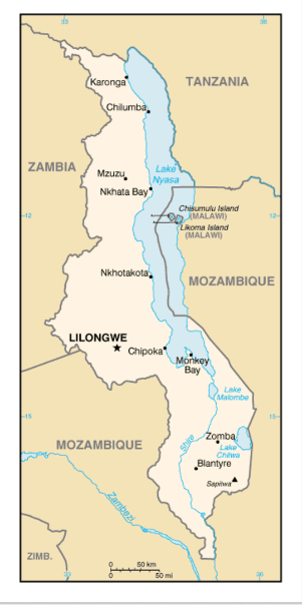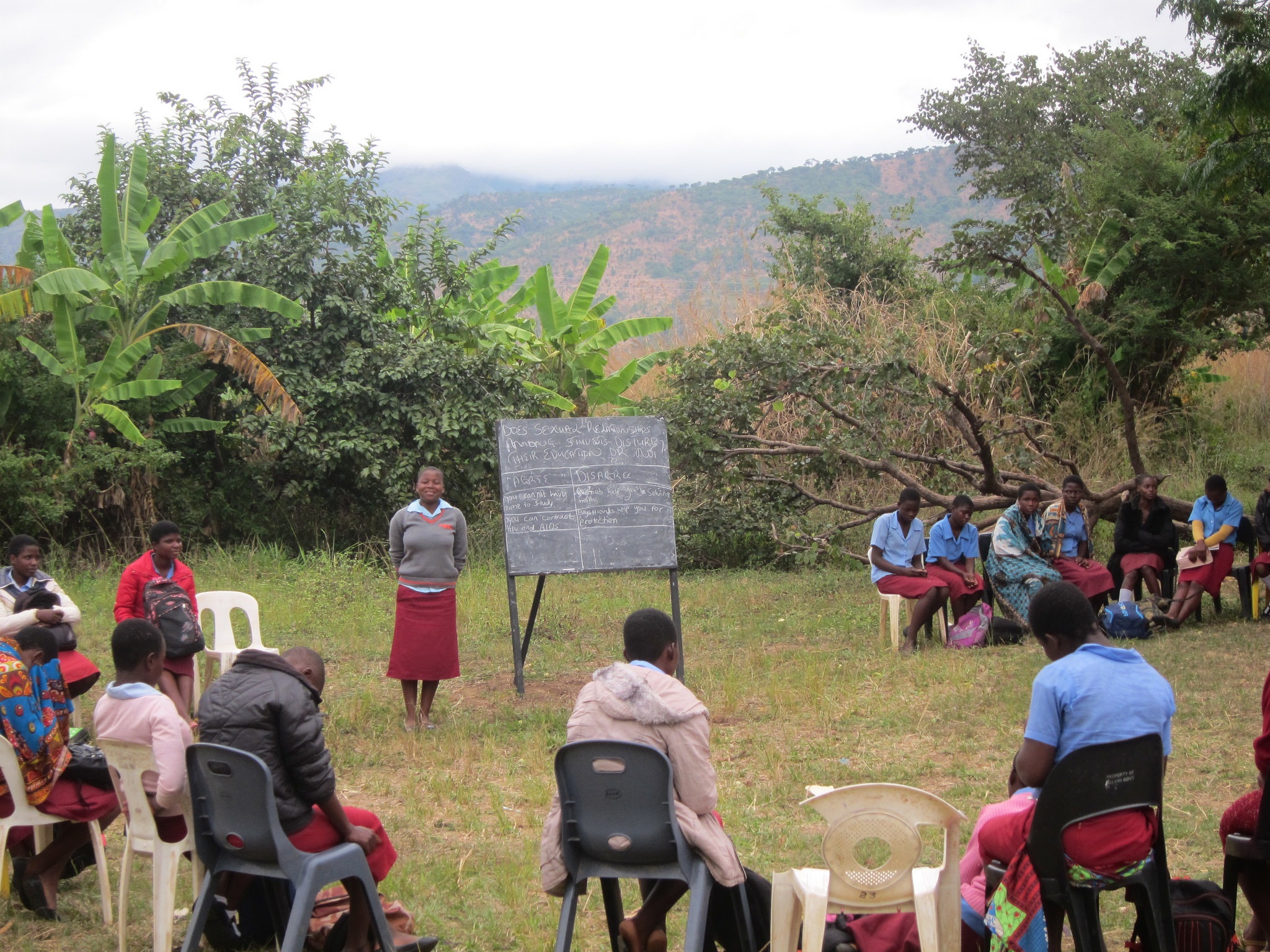
Mission
The mission of AGE Africa is to provide life-changing opportunities for young women in Malawi through targeted initiatives.
Life Challenges of the Women Served
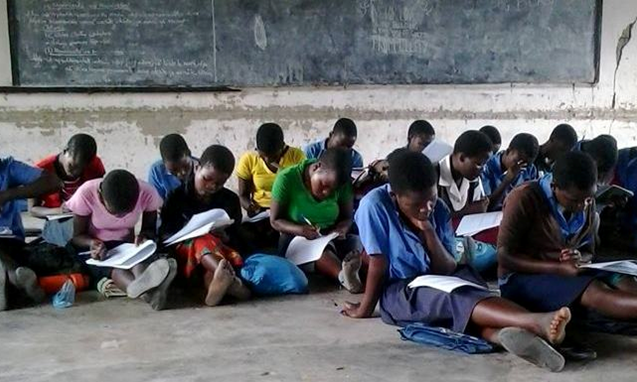 Adolescent girls in Malawi face numerous vulnerabilities: systemic poverty, lack of family and community support, limited educational opportunities, lack of voice, and adverse social attitudes. These vulnerabilities constrain them economically and socially and often result in risky sexual practices that contribute to poor long-term reproductive and health outcomes. These girls are often unable to manage the physical and psychological changes that mark adolescent years. They also lack the motivation, skills and resources that would otherwise enhance their self-reliance and aspirations for the future. There are few policies or programs directed toward empowering adolescent girls, and little attention has been paid to preparing them for positive economic outcomes.
Adolescent girls in Malawi face numerous vulnerabilities: systemic poverty, lack of family and community support, limited educational opportunities, lack of voice, and adverse social attitudes. These vulnerabilities constrain them economically and socially and often result in risky sexual practices that contribute to poor long-term reproductive and health outcomes. These girls are often unable to manage the physical and psychological changes that mark adolescent years. They also lack the motivation, skills and resources that would otherwise enhance their self-reliance and aspirations for the future. There are few policies or programs directed toward empowering adolescent girls, and little attention has been paid to preparing them for positive economic outcomes.
Girls in Malawi also lack access to financial capital and have limited opportunities to gain the education and skills that can lead to economic advancement. Today in Malawi, there are twice as many boys enrolled in school as girls, and in rural areas there are up to six times more boys. Only six percent of girls graduate from high school, and fewer than one percent go on to higher education. In addition, Malawi has one of the highest child marriage rates in the world, with over half of all girls dropping out of school before age 18 to marry or because of early pregnancy or the cost of schooling. Twelve percent are married before age 15. Both the school retention rate and the incidence of marriage before age 15 are greater in the rural southeastern region. Traditional beliefs about gender roles and sexuality, as well as women and girls’ subordination, undergird many customary practices and laws that perpetuate early marriage.
Empirical and anecdotal evidence show that young girls and women pushed into child and/or forced marriages do not comprehend that they have basic human rights, such as the right to health and education. The health consequences of both early marriage and sexual abuse, for example, include a high HIV rate: 13 percent of females ages 15 to 49 are HIV positive, compared to 8 percent of males the same age. In addition, the maternal mortality rate is high, with 19 percent of females ages 15 to 49 dying while giving birth.
According to the United Nations, adolescents make up one-sixth of the world’s population and the majority live in developing countries like Malawi. Adolescents have been identified as an important entry point of interventions, but all too often they are unacknowledged in development planning and policy development.
The Project
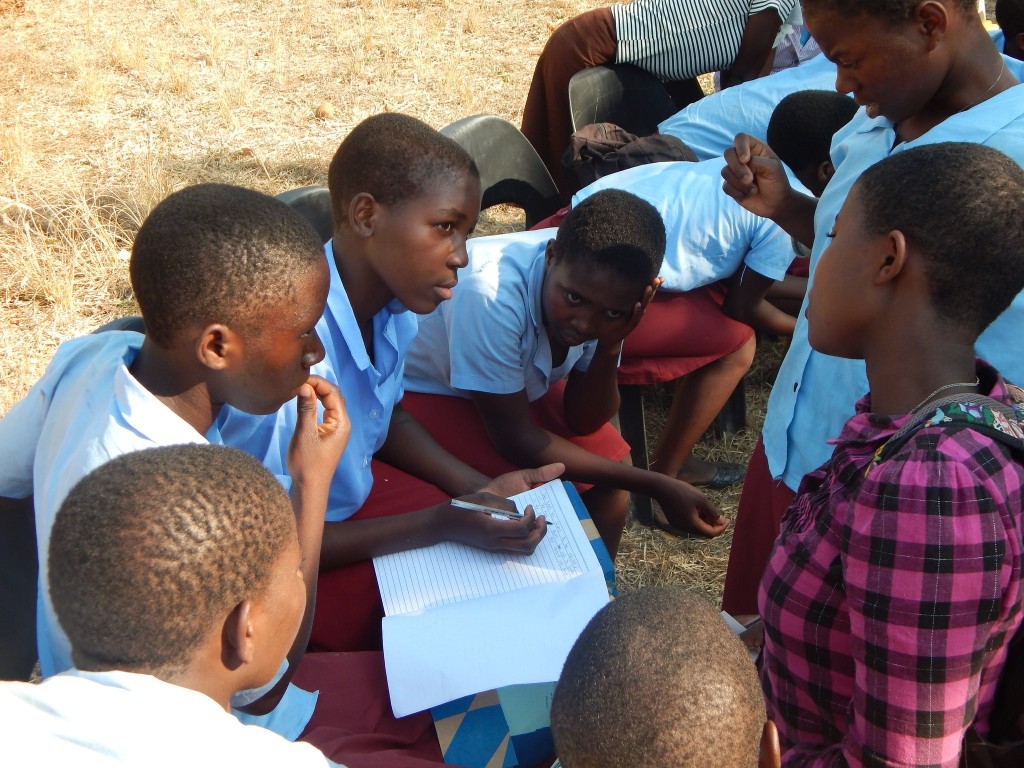 Dining for Women’s grant supports AGE Africa’s CHATS (Creating Healthy Approaches to Success) program that serves 480 young women at eight schools. Delivered at partner schools as “girls’ clubs,” CHATS is a three-year, weekly after-school program for adolescent girls that builds their core life skills while helping them negotiate the challenges of continuing their educations. AGE Africa works closely with the Malawi Ministry of Education and the local schools to support this initiative.
Dining for Women’s grant supports AGE Africa’s CHATS (Creating Healthy Approaches to Success) program that serves 480 young women at eight schools. Delivered at partner schools as “girls’ clubs,” CHATS is a three-year, weekly after-school program for adolescent girls that builds their core life skills while helping them negotiate the challenges of continuing their educations. AGE Africa works closely with the Malawi Ministry of Education and the local schools to support this initiative.
Organized as a series of informal conversations that are co-facilitated by peer groups, CHATS features curriculum that combines sexual and reproductive health education with leadership training and career guidance, self-advocacy, gender-based violence awareness and prevention, entrepreneurship, problem solving, and access to higher education. This broad-based education equips the girls with life skills as well as technical skills. The entrepreneurship and livelihood skills training component of CHATS provides the girls with a broader base of livelihood opportunities for either self-employment or employment on the local market. The training also encourages the girls to become agents of change by increasing their self-esteem, assertiveness and conflict resolution skills. In addition to gaining an understanding of their sexuality and health, they come to understand their legal rights surrounding these and other areas of their lives. The girls’ leadership skills are further evidenced by their newfound abilities in public speaking, decision making, self-advocacy, and critical thinking.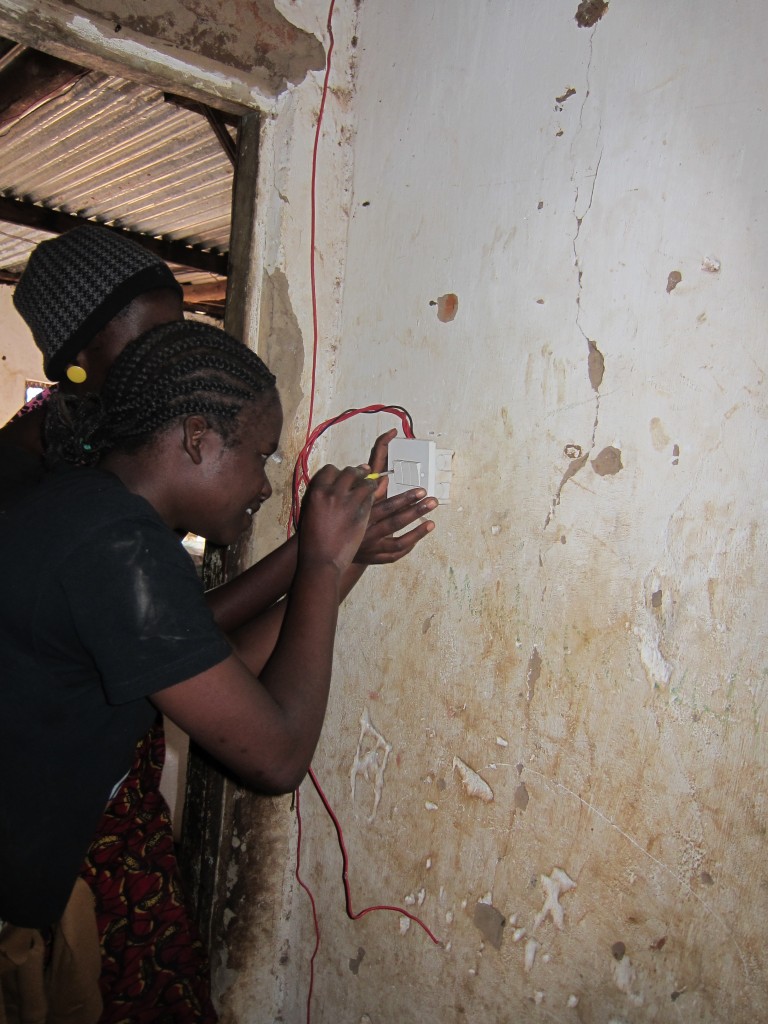
All girls at AGE Africa’s partner secondary schools are invited to participate in the CHATS Girls’ Club programs. These are some of Malawi’s most vulnerable young women: 96 percent are first-generation attendees, 42 percent walk almost five miles to school each way, 43 percent have lost one or both parents, and 80 percent report going to bed hungry every night. Even though these girls face undeniably tough challenges to achieving their education, 88 percent of AGE Africa’s scholarship awardees have finished four years of high school and more than 50 percent go on to higher education. When a single girl who would have been denied an education completes all four years of secondary school, it starts a positive cycle of education and empowerment from mother to daughter, generation after generation. The impact is felt from villages, communities and in the country of over 16 million where fewer than half are female.
In addition, based on the success in prior CHATS programs, the 480 participants will become active, vocal members of their communities and will likely experience some significant outcomes. It is anticipated that the school dropout rate will fall from 55 percent to less than 5 percent. A full 95 percent will delay marriage and 92 percent will delay pregnancy. Every participant will come away with increased self-confidence, an understanding of entrepreneurship, and knowledge of sexual and reproductive health issues.
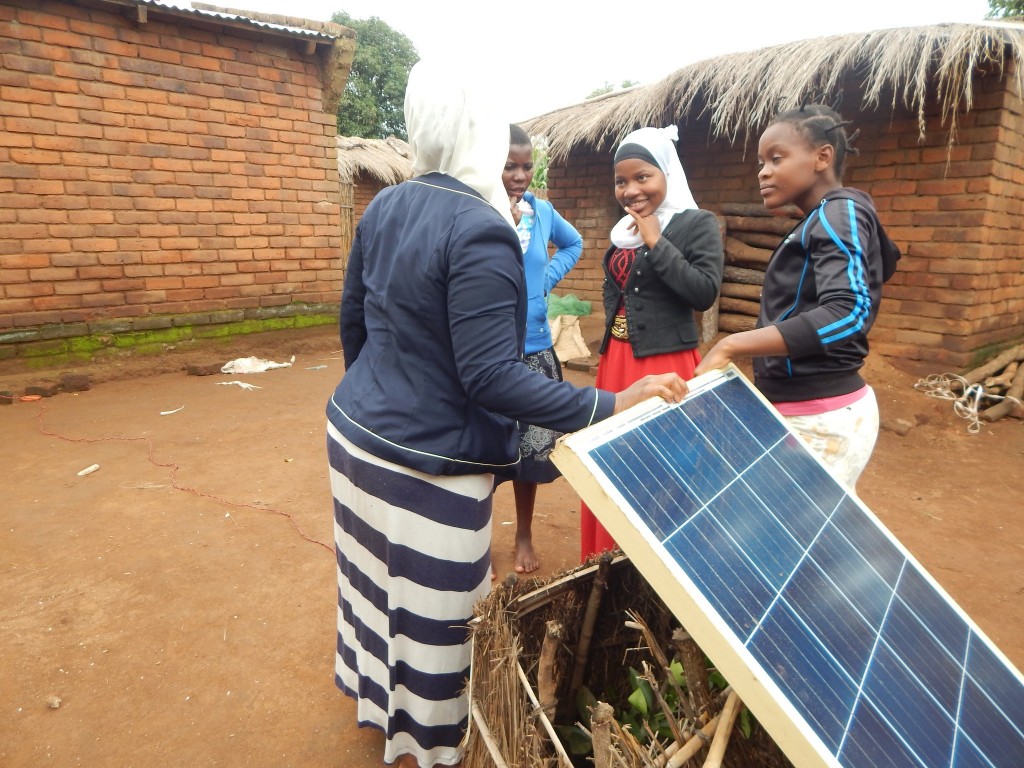 Throughout the year in the program, the adolescent girls are supported by faculty mentors, female guest speakers, and by AGE Africa staff members. At the beginning of the CHATS curriculum, participants engage in a two-day training in peer facilitation and leadership. Faculty advisors from each school site are similarly trained in the unique CHATS peer-led program model and are taught how to coach (rather than teach) the students. Girls then meet weekly throughout the school year to discuss critical CHATS topics and build peer support communities. CHATS sessions are co-facilitated by the girls themselves and are supported by faculty advisors and AGE Africa program coordinators.
Throughout the year in the program, the adolescent girls are supported by faculty mentors, female guest speakers, and by AGE Africa staff members. At the beginning of the CHATS curriculum, participants engage in a two-day training in peer facilitation and leadership. Faculty advisors from each school site are similarly trained in the unique CHATS peer-led program model and are taught how to coach (rather than teach) the students. Girls then meet weekly throughout the school year to discuss critical CHATS topics and build peer support communities. CHATS sessions are co-facilitated by the girls themselves and are supported by faculty advisors and AGE Africa program coordinators.
Interwoven throughout the curriculum is a guest speaker series in which professional women and AGE alumnae present specific topics to the girls, such as accessing education or starting a small business. This element provides girls with ongoing exposure to a variety of career paths as well as female role models to support and inspire their personal aspirations. The adolescents also attend AGE Africa’s annual All Scholars Girls Empowerment Retreat, a well-loved event that allows students to explore leadership and entrepreneurship topics in depth and to cultivate peer communities that provide support throughout their high school careers. CHATS is embedded in the local community in Malawi. It is carried out and sustained by local AGE Africa staff members and Faculty Advisors who are all Malawian. By using a “teach the teachers” model, AGE Africa ensures that the CHATS curriculum becomes institutionalized within local schools.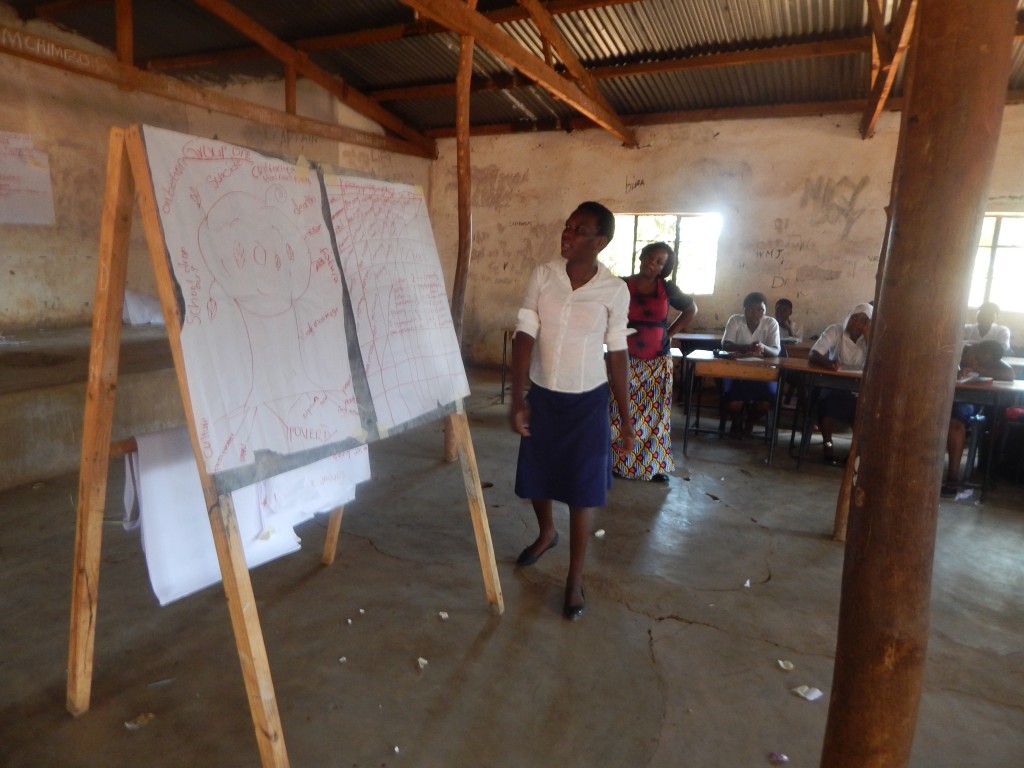
AGE Africa has a tiered leadership structure. A Malawian woman, who comes from a similar background as the program participants, leads the Malawi office. The AGE field team is predominantly comprised of women who grew up in local villages, graduated from secondary schools and went to university, overcoming the same challenges as the girls from the poorest districts where AGE works. The CHATS program utilizes a peer-led approach. During the first year, participating girls are trained as group facilitators and public speakers. During the following two years, they lead CHATS sessions for their peers. Peer leaders have support from alumnae mentors, young women who have recently graduated from CHATS and secondary school. A female teacher is identified at every school to coach the girls and support the program.
Open and free societies cannot exist without educated and free thinkers who have both the knowledge and the self-awareness to act. Yet because self-efficacy, agency, leadership and self-esteem are such difficult things to measure, few programs focus on building those essential skills. However, through CHATS, AGE Africa scholars acquire a unique combination of leadership and advocacy skills, which builds girls’ self-esteem and sense of agency in their families and communities. Particularly in a country where less than seven percent of women finish basic education, AGE Africa’s girls are the building blocks to creating a more open, just society in which they are able to advocate for better wages, living conditions, gender balance and a future for themselves and their children.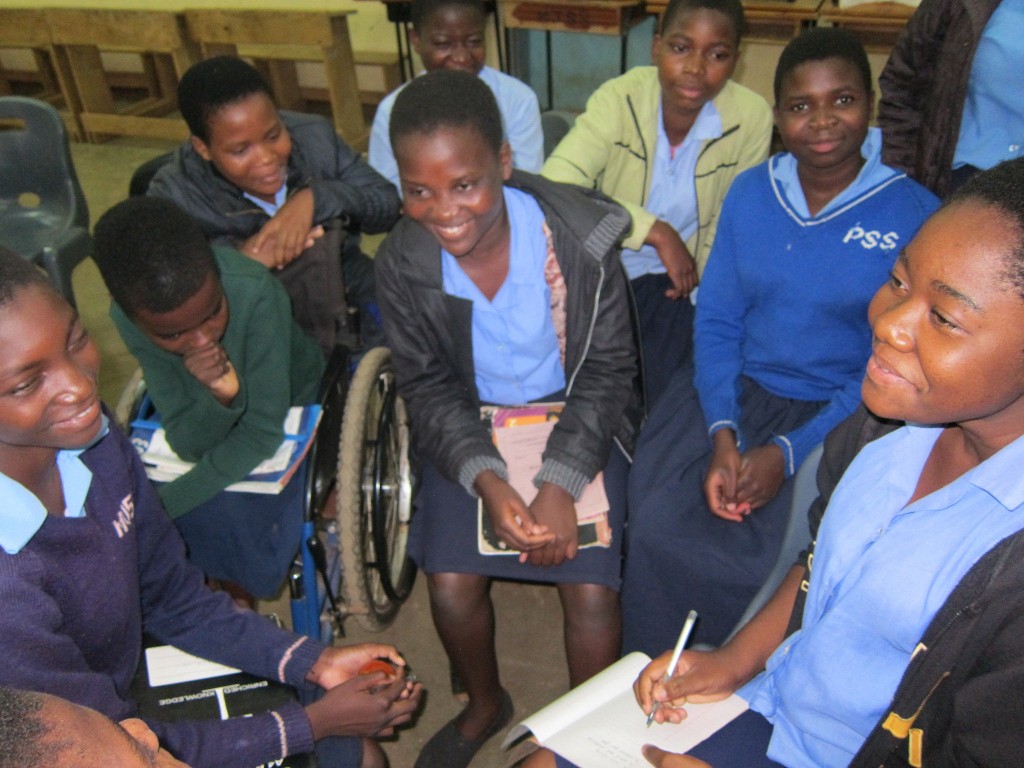 AGE Africa creates opportunities for girls to more actively participate in all sections of their lives while simultaneously working with communities to help them be more open, supportive, and tolerant as the girls themselves become more educated and self-aware.
AGE Africa creates opportunities for girls to more actively participate in all sections of their lives while simultaneously working with communities to help them be more open, supportive, and tolerant as the girls themselves become more educated and self-aware.
AGE Africa is on track to have CHATS adopted as an official supplemental life skills curriculum by the Malawi Ministry of Education, Science and Technology in 2017. This will allow other schools to adopt the curriculum as well. This will help to get the support of parents, the community, local district and national leaders for the program’s success and long-term sustainability.
The project will have a direct impact on 480 girls and an indirect impact on 4,800 family and community members.
Sustainable Development Goals
![]()
![]()
Questions for Discussion
- Why is an education focused entirely on reading, writing, and arithmetic not enough for Malawi girls?
- How might these girls begin to alter cultural norms?
- How do you think the CHATS can program benefit younger siblings?
How the Grant Will be Used
Dining for Women’s $50,000 grant supports AGE Africa’s project expenses, monitoring and evaluation, and administrative costs for the CHATS program in eight schools, at an average cost of $105 per adolescent.
Direct Impact: 480 Indirect Impact: 4,800
Why We Love This Project/Organization
We love this project because of the high need of this program and the opportunity to support Malawi. The project is open to all girls, has a high success rate, includes examples of girls’/women’s empowerment and is peer led.
Evidence of Success
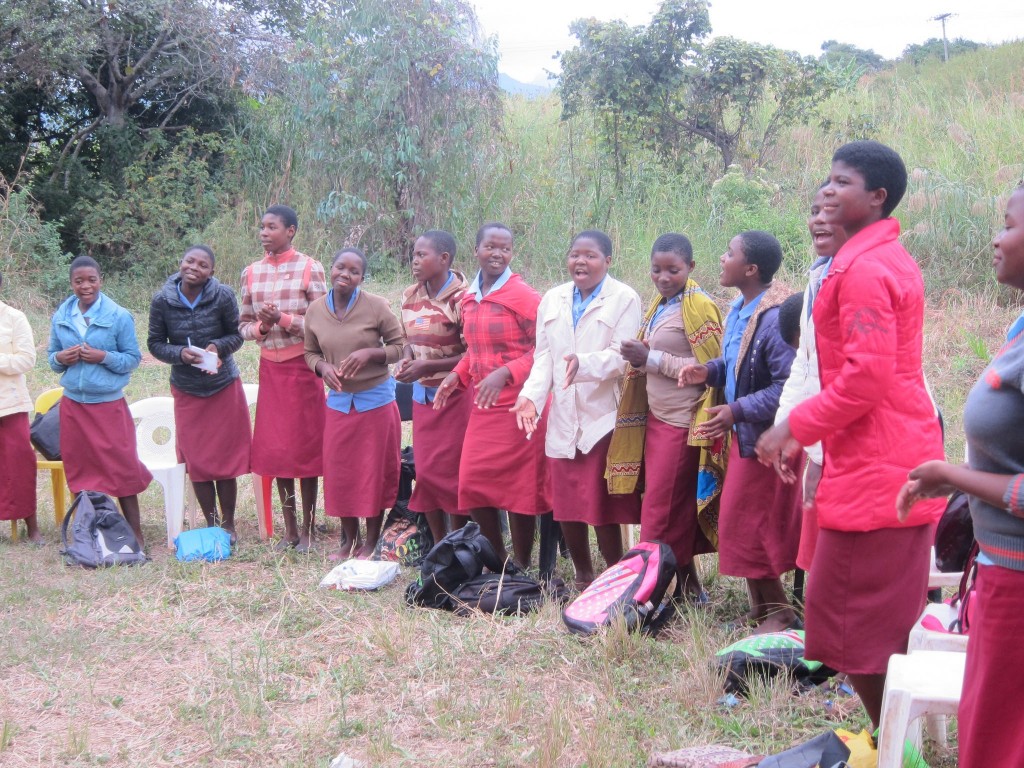 AGE Africa’s CHATS clubs are extremely popular and growing rapidly in size. In September 2016 alone, 200 additional girls joined the program – doubling and tripling the size of some of the clubs. The program currently reaches 1,200 girls in 24 schools in Balaka, Machinga, Mangochi, Mulanje and Zomba, five of the poorest, most rural districts in Malawi.
AGE Africa’s CHATS clubs are extremely popular and growing rapidly in size. In September 2016 alone, 200 additional girls joined the program – doubling and tripling the size of some of the clubs. The program currently reaches 1,200 girls in 24 schools in Balaka, Machinga, Mangochi, Mulanje and Zomba, five of the poorest, most rural districts in Malawi.
Approximately 12,000 girls within the region struggle with the same issues as the CHATS participants. The organization has committed to scaling CHATS to reaching those 12,000 girls over the next three years. At the end of 2019, AGE Africa aims to reach 12,000 girls in 85 schools. This year (2017) more than 2,100 girls participated in CHATS Girls Clubs at 24 schools throughout southern Malawi. Ninety-six percent of AGE Africa scholars are first generation high school attendees, and 99 percent will be the first women in their families to finish high school.
AGE Africa’s programs have a proven track record of reversing nationwide trends by delaying early marriage and pregnancy. In fact, 100 percent of participants delay pregnancy and marriage well beyond the national average. Nearly 95 percent of AGE Africa students complete all four years of secondary school compared to the nationwide average of less than 6 percent. Fifty percent qualify for higher education, with an 80 percent matriculation rate from boarding school partners.
In 2013, CHATS was recognized by the Malawi Ministry of Education, Science and Technology (MOEST) as a priority intervention for improving girls’ retention in secondary school and improving gender equity in the public schooling system. CHATS is being considered for adoption as an official supplemental life skills curriculum nationwide. AGE Africa joined 50 organizations at the Clinton Global Initiative to make a collaborative commitment to girls’ secondary education through CHARGE – Collaborative Harnessing Ambition and Resources for Girls Education, a global coalition committed to reaching 14 million girls by 2019.
Voices of the Girls
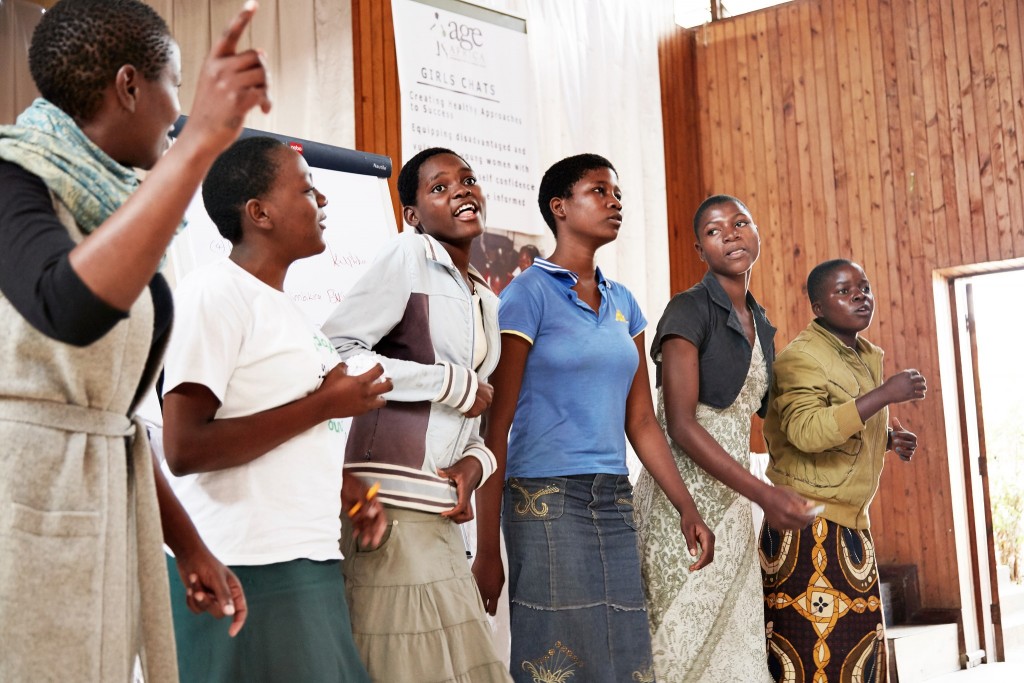 “CHATS is a hub of knowledge on gender issues and everyone at the club loves each other. I think if I had not joined CHATS I could not have stayed in school. The CHATS have helped me to stay in school and support my sisters.” – Ester Chagunda
“CHATS is a hub of knowledge on gender issues and everyone at the club loves each other. I think if I had not joined CHATS I could not have stayed in school. The CHATS have helped me to stay in school and support my sisters.” – Ester Chagunda
“Girls’ education is important because people can get many resources from an educated girl. With an education you help and assist yourself, you can become self-reliant. You can know other things and know the importance of education.” – Grace Supuni
“If a girl is to be educated, such as me, it means that my young ones will be educated as well. They will look at me as a role model, as someone who has been educated. Some other people think that girls should not be educated, that they should stay at home and get married. But, if they see that I am in school and have a high position, they will also stay and go to school.” – Scholastica Simango
“I love the CHATS because they changed my life. People who overcame difficult things come to speak to us and from them, I now think that the difficulties I face will not make me drop out of school. I do not think bad things about my life, but good things that I can do. In my village people pester me, telling me not to go to school. They tell me about girls are educated and now do not have jobs but, I think with an education I will get a good job that will help me have a better life.” – Fallice Friday
“The leadership and life skills training from AGE prepared me for the world. I learned how to stay organized and get everything done that I needed to. I found for success for girls, it isn’t just financial; it’s the moral support they give, as well as the role models they gave us to look up to. Everything that people give to AGE is going a long distance. They are all making a big impact, a big change like the one they made in my life. I want people to know they are having an impact on the ground and, although it may not come right away, it comes and they are changing lives” – Ida Savala
About the Organization
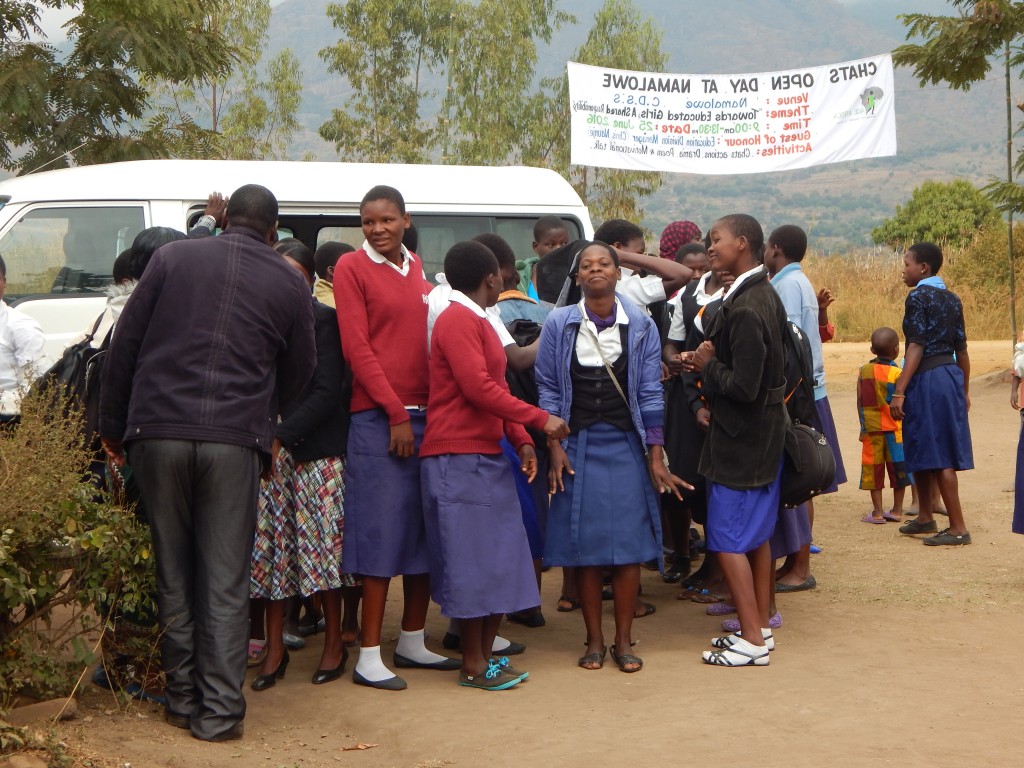 AGE Africa was founded in 2005 by Xanthe Ackerman, with the establishment of a scholarship fund for girls who qualified for secondary school but whose families could not afford the school fees. AGE Africa quickly learned that a scholarship was not enough to keep girls from dropping out or failing out of school. In 2009, AGE Africa conducted a baseline study to learn what challenges prevented girls from finishing their educations. The results of this study were clear: pressure to marry, early pregnancy, and serious knowledge gaps about the value of an education and post-secondary opportunities were causing girls to drop out en masse.
AGE Africa was founded in 2005 by Xanthe Ackerman, with the establishment of a scholarship fund for girls who qualified for secondary school but whose families could not afford the school fees. AGE Africa quickly learned that a scholarship was not enough to keep girls from dropping out or failing out of school. In 2009, AGE Africa conducted a baseline study to learn what challenges prevented girls from finishing their educations. The results of this study were clear: pressure to marry, early pregnancy, and serious knowledge gaps about the value of an education and post-secondary opportunities were causing girls to drop out en masse.
In 2010, in response to the findings of the baseline survey, AGE Africa began designing, piloting and testing an extracurricular program to combat these specific challenges. AGE Africa’s first life skills program was launched that year as a series of six weekend workshops covering sexual and reproductive health and core topics in career guidance and small business. Feedback from the sessions was positive, but it was also clear that girls needed engagement throughout the school year in order to achieve real behavior and attitudinal shifts.
In 2011, AGE Africa worked with a team of Malawian women and life skills experts to develop a two year after school program called CHATS. From the start, the program has incorporated a unique peer-led approach that has yielded significantly higher impact compared to other life skills programs.
Based on the success of CHATS, in September of 2014 AGE Africa embarked upon a journey to ready its extracurricular program for replication. The goal is to reach 12,000 girls throughout the southern region of Malawi by 2019. Championed by the Ministry of Education, Science and Technology as a priority intervention for addressing the barriers to girls’ education, CHATS is a low-cost, high impact intervention developed from the lessons learned by AGE Africa after ten years of work with underprivileged girls in Malawi. It is proven to improve girls’ agency, reduce forced marriage and early pregnancy, and increase girls’ completion of secondary school. Currently, there are more than 1,200 girls actively participating in CHATS.
Where They Work
Malawi is among the world’s most densely populated and least developed countries, the sixth poorest nation in the world in terms of GDP per capita. It is a small, landlocked nation about the size of Pennsylvania in southeastern Africa, with a population of around 17 million. It is characterized by narrow plateau and rolling plains, hills and mountains. It is often referred to as the “warm heart of Africa” because the people are known to be kind and welcoming. Nearly 90 percent of the population live in rural areas. AGE Africa works in Balaka, Machinga, Mangochi, Mulanje and Zomba, five of the poorest, most rural districts of southern Malawi.
Malawi’s economic performance is constrained by policy problems, economic instability, limited connectivity inside its own borders and with the rest of the world, poor infrastructure, horrible corruption, high population growth, poor health, and low levels of education attained. In the rural communities AGE Africa serves, people live on a dollar a day. The majority of the population relies on low value subsistence farming for survival, creating a cycle of poverty that is difficult to break. The birth rate has gone down, but is still high at 5.5 children per woman today, compared to 7 children in 1980. Malawi’s economy is largely dependent on agriculture, with 70 percent of the country’s export revenue from tobacco alone, and 80 percent of export revenue from agriculture in general. Other important crops include tea and sugar cane.
Malawi is a relatively new country, not becoming an independent nation until 1964. After three decades of one-party rule, an election was held in 1994 which led to a provisional constitution the following year.
As a land locked sub-Saharan African nation, it is full of unexpected challenges. The country is currently experiencing a devastating drought which compounds girls’ vulnerability and can cause them to miss school. Additionally, the failing economy contributes to the consistent devaluation of the local currency (kwacha) and the simultaneous rising cost of goods.
A closer look at the effect of girls’ clubs
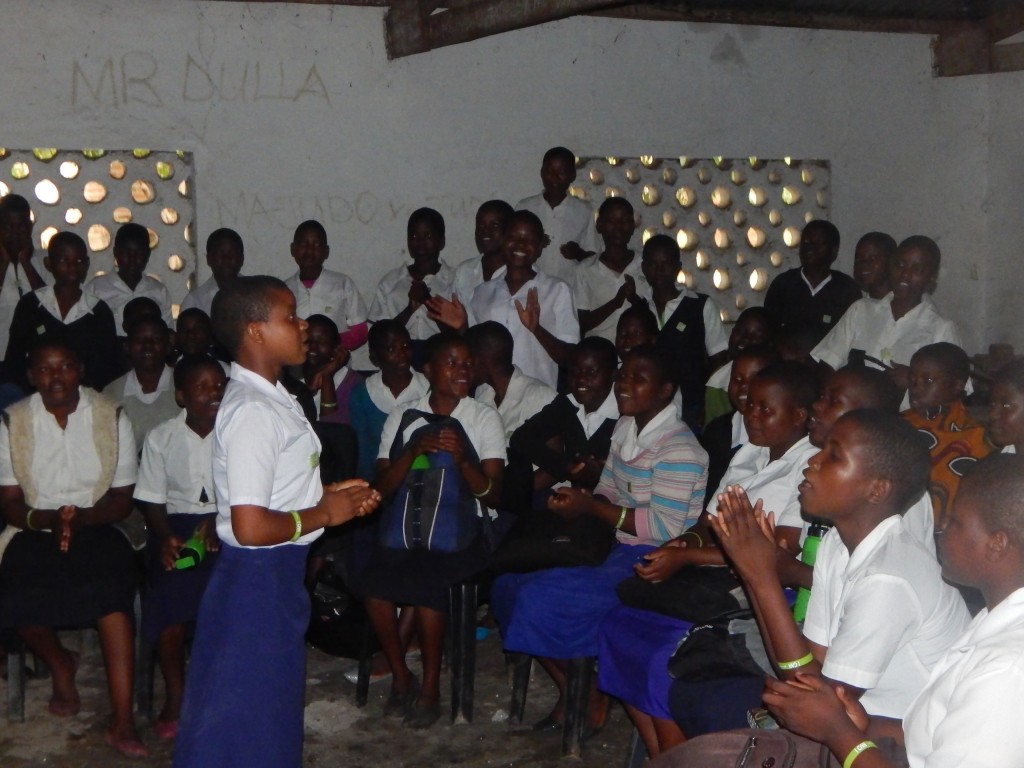 Special programs for adolescent girls have become the gold standard for helping vulnerable female youth growing up in challenging situations see a brighter, healthier future. These clubs and school-related programs have seen profoundly positive results and are being replicated around the world – in Afghanistan, Haiti, Jordan, Nepal, Liberia, South Sudan and more. At their essence, they provide a safe haven for young women to meet, speak freely, and learn critical life skills from positive role models. This includes everything from sexual and reproductive awareness to financial literacy and leadership skills. These girls learn the importance of staying in school and avoiding early marriage and pregnancy. Arming young girls with this critical knowledge enables them to take care of themselves and know their rights. Not surprisingly, these programs have extremely high retention rates. More importantly, they have changed lives.
Special programs for adolescent girls have become the gold standard for helping vulnerable female youth growing up in challenging situations see a brighter, healthier future. These clubs and school-related programs have seen profoundly positive results and are being replicated around the world – in Afghanistan, Haiti, Jordan, Nepal, Liberia, South Sudan and more. At their essence, they provide a safe haven for young women to meet, speak freely, and learn critical life skills from positive role models. This includes everything from sexual and reproductive awareness to financial literacy and leadership skills. These girls learn the importance of staying in school and avoiding early marriage and pregnancy. Arming young girls with this critical knowledge enables them to take care of themselves and know their rights. Not surprisingly, these programs have extremely high retention rates. More importantly, they have changed lives.
For instance, results from the 1,500+ Girls’ Clubs of Uganda show that girls who have been club members for two years are 72 percent more likely to be involved in income-generating activities than those who did not participate, 26 percent less likely to get pregnant as teens, and half as likely to engage in sex unwillingly. In Kenya Self Help Project that serves 3,400 girls, the school dropout rate dropped by 98 percent, eliminated teen pregnancy for participants, and boosted girls’ high school eligibility from 43 to 100 percent. In Swaziland, where sexual and gender based violence is rampant, girls who participate in weekly mentor-led discussions benefit not only because they become more knowledgeable about their bodies and their rights, but also because they form friendships where they can air their thoughts and feelings. Considering nearly half of women age 13-24 experience sexual violence in Swaziland, being able to talk about it is pivotal to the healing process – and a first step toward finding a voice. These social connections give girls the confidence to assert themselves, resolve conflicts, and demand more control over their bodies and decisions.
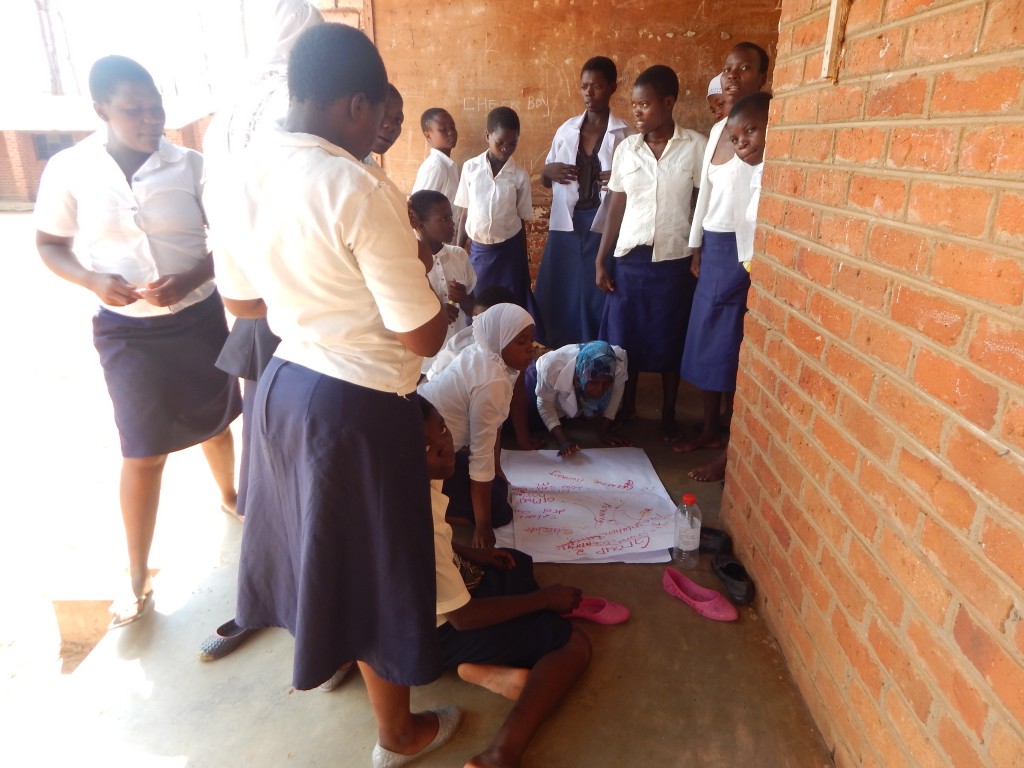 Over the years, Dining for Women has supported numerous in-school and after-school programs that allow young girls to optimize their odds of success in the future. Through DFW’s commitment to the Peace Corps’ Let Girls Learn Fund, GLOW (Girls Leading Our World) Camps and Clubs have become models for inspiring girls to change their world. The GLOW Camp program encourages self-confidence, challenges campers to think beyond traditional gender roles, and addresses the unique societal and health issues girls and women face. Specialized curriculum and learning experiences culminate in a planning session for girls’ goals and future careers. As an extension of GLOW camps, GLOW Clubs incorporate lessons in self-esteem and leadership into reoccurring activities to sustain the development of adolescent girls over the long-term.
Over the years, Dining for Women has supported numerous in-school and after-school programs that allow young girls to optimize their odds of success in the future. Through DFW’s commitment to the Peace Corps’ Let Girls Learn Fund, GLOW (Girls Leading Our World) Camps and Clubs have become models for inspiring girls to change their world. The GLOW Camp program encourages self-confidence, challenges campers to think beyond traditional gender roles, and addresses the unique societal and health issues girls and women face. Specialized curriculum and learning experiences culminate in a planning session for girls’ goals and future careers. As an extension of GLOW camps, GLOW Clubs incorporate lessons in self-esteem and leadership into reoccurring activities to sustain the development of adolescent girls over the long-term.
Like the other girl-centric clubs around the world, the impact of GLOW camps doesn’t stop once the campers head home. A crucial element is encouraging the girls to pass on their knowledge to their peers. The skills and ideas presented at these camps and clubs can be disseminated to a much larger number of young people if each girl makes an effort to share her experience. The goal is for this ripple effect to seep into each girl’s community, thus benefiting young women for generations to come.
Source Materials
https://bmcproc.biomedcentral.com/articles/10.1186/1753-6561-9-S4-A5
https://www.unicef.org/socialpolicy/files/BRAC-_November_2012.pdf
https://togetherwomenrise.org/dfw-funds-glow-camps-to-inspire-girls/
https://togetherwomenrise.org/programfactsheets/kenya-self-help-project/


